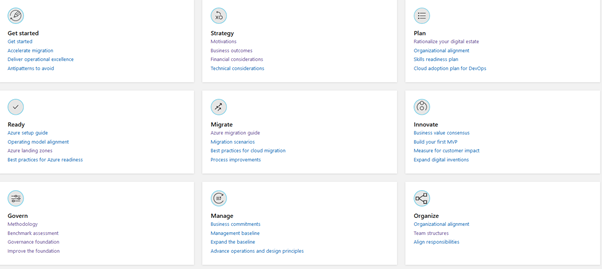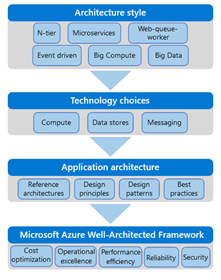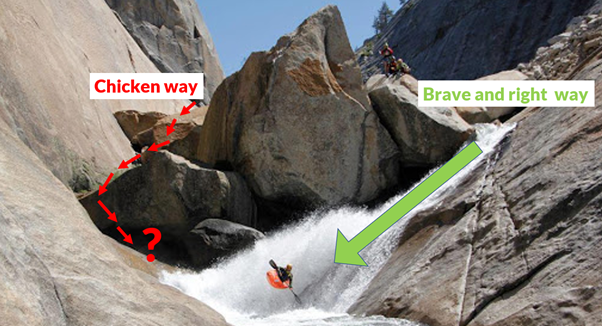In the last seven years, I worked a lot in the cloud governance space, specifically in Microsoft Azure technology. For me, this has been a really great opportunity to grow up my knowledge in such a complex topic. In this article, I like to provide some of the best guidance from my personal experience to achieve good cloud governance.
Rule number one, use the correct guidance and resources.
The first two things I recommend are the Microsoft Cloud Adoption Framework (MSCAF) and Microsoft Azure Well-Architected Framework (MSWAF). These two frameworks contain everything we need to obtain good cloud governance. Let do some clarification about how to use them.
Both the frameworks aim to provide best practices, guidance, and tools, and the main difference between them is that the MSCAF is focusing on helping you into migration into the cloud and into adoption.
The MSCAF is great if:
- You are looking to move into the cloud, and it can be a data centre or an on-premises solution.
- You are already using Azure, but you don’t have any control and discipline or methodology.
Below the idea behind MSCAF.

As you can see, the framework is organised in specific areas, and the idea is to provide guidance across a journey into the cloud.
The MSWAF is focused on providing guidance in an architectural way in five important pillars, reliability, Security, Costs, DevOps, Performances. The MSWAF is essentially the more advanced second step after the MSCAF.
The MSWAF is great if:
- You are already using Azure, and you need clear guidance to improve in these five pillars.
- You are looking to learn deeper in the five pillars.
The MSWAF is the last piece of the puzzle, starting from the architecture to the technology, and application, below the idea behind MSWAF.

The second rule, nothing better than experience.
The MSCAF and MSWAF are amazing frameworks, they provide a lot of information, but it can be difficult to navigate across them and understand what exactly we need to organise ourself. These frameworks provide what we need to achieve our goals, but our goals depend on many factors like budget, internal company strategies, business commitment and many more, this is what I call the experiential factor.

The experiential factor is very hard to build, and this is something that a person achieves on the field, experimenting with many errors. There is no learning path in the experience without errors.
The best thing to do is to involve a professional with experience for the first part of the activity, and this person will be able to drive us into these frameworks and map our priorities in the best and profitable way.
The third rule, this is my most important rule, avoid the chicken way.
I know many friends of mine are laughing now reading this rule, and they know how much I am right now, and this is where a person with experience can really help us, but what exactly is the chicken way?
I do and love kayaking, and in this community, we have this saying, “let avoid the chicken way”. The chicken way is the “safer way” to engage a white-water rapid river, and it is usually “safer” than the brave one.
Below is a clear example of what I mean by chicken way.

The chicken way may look “safer”, but I can guarantee you that it is usually more complicated, longer, unpleasant, and sometime even more dangerous than the brave one.
The same thing happens in technology, sometimes we decide for a chicken way because we are worried into engaging the commitment, or we think we can save money, but this is not true.
Engaging a new path requires braveness and commitment, and we need to be confident about the technologies to use. The best thing to do to avoid the chicken way is to confidence in people with experience and relay to them.
I hope this article will help many people and companies to better understand how to achieve a good Azure Governance. Feel free to contact me with any questions in LinkedIn.

